In the studio of Babette Cooijmans
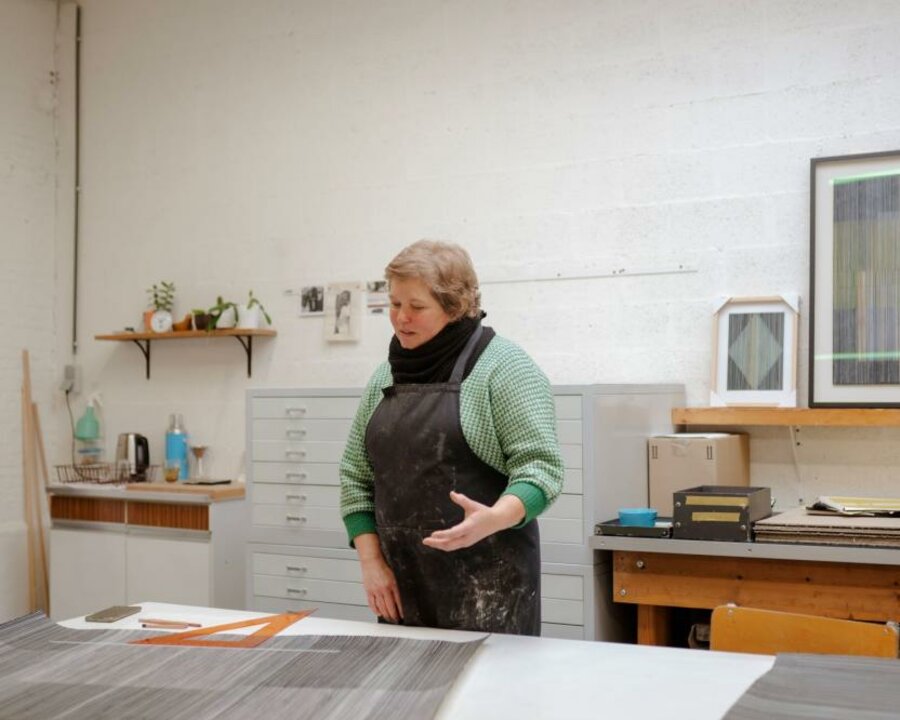
Babette Cooijmans' studio is located in the centre of Borgerhout, Antwerp. The Turnhoutsebaan may be just around the corner, but its bustle is forgotten from the moment we pass the garage door towards the back of the house. Babette discovered her ideal workplace in this former warehouse after a very long search.
"I found this place rather coincidentally. I had been working for a long time for Gezeever, a great silkscreen studio here in Antwerp, but I also wanted to continue with lithography. I use several techniques in my work: lithography, silkscreen, xylography, and I often draw as well. Even though I studied painting and printmaking, I never work directly on white canvas or white paper. That process is too fast for me; I need a slow process to create my images. That's also why I sort of adjusted the silkscreen technique to my personal preferences, in order to achieve more depth. But I kept dreaming of having my own litho studio.
Such a studio has different requirements than others: the floor has to be solid enough to bear heavy stones, and to be able to rinse the stones there has to be water and a large graining sink. Also, the studio needs good light and sufficient space for our large presses and it has to be dry because we work with paper. And of course, all that for a reasonable price.
That's not so easy to find. My neighbour was so kind to store the printing press that I had bought in her house, but it couldn't stay there any longer. She suggested I place an ad in Velt magazine. Although Velt magazine handles an entirely different sector than the arts, one week after I'd placed the ad I was contacted by the owners of this building. They didn't want it to be a warehouse or a shop, but they liked the idea of taking in an artist.
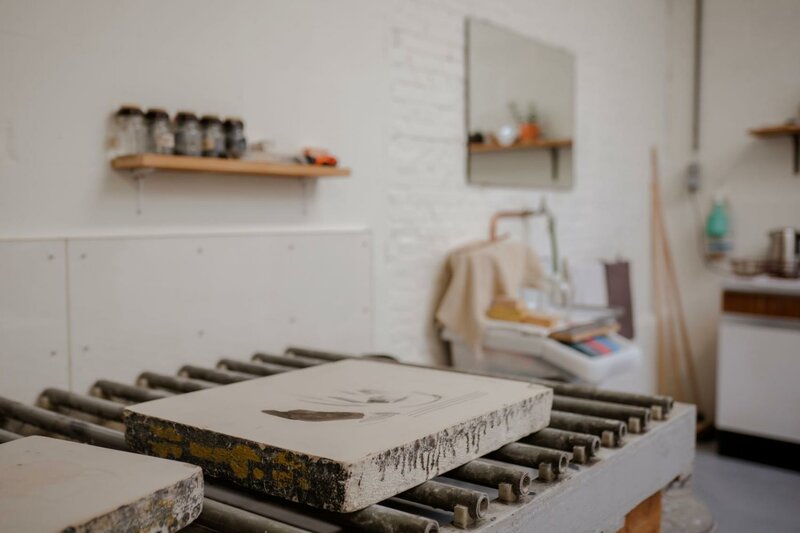
My landlord painted everything white and put in new lights, my husband installed a washbasin, a graining sink and a toilet, and I was good to go. I found furniture on freecycle groups and in second-hand shops.
I live just around the corner from my studio, and to me that is of vital importance. Every free moment I have – in between my job and taking care of the children – I can easily come here. I share the studio now with two other litho artists, which gives me the freedom to also work in other studios such as Gezeever or as an artist-in-residence. And it motivates you to tidy up the studio every time you leave. Chaos never gains the upper hand in this place."
Was it during Atelier in beeld that you invited people to your workplace for the first time?
"I have opened the doors to my studio several times before. Time and again it inspires me. You expose your process in a very personal way, people get a true look behind the scenes. It clarifies things, puts your motives for creating things, your sources of inspiration, and how you work with particular techniques into perspective. I am personally very aware of this because of my traditional working methods.
Also, it often generates interesting feedback. People react to your work, your unfinished artwork. To me that’s very important. My studio is a place where things can rest, be fostered and develop. When you work somewhere else, you always need a specific plan. But here, I can just come by, have a look, and then reflect some more. Sometimes inspiration comes fast, sometimes it takes a while to find the image I am looking for.
Did you advertise your studio yourself for Atelier in beeld?
"The concept of a national open studio day immediately appealed to me, and I was immediately convinced that it could work. From my experience at KMSKA, where I worked for 12 years, I know that people love to take a look behind the scenes. On the other hand, I felt a bit hesitant: so many studios, such a big project with only limited promotion for the individual studios. Surely not many people will be able to find their way to all of them. So I decided to spread the word myself and sent some messages through social media, like I usually do.
But we were amazed by the number of visitors we had, and it turned out to be a very fun and inspiring day. I also assumed we'd mostly see familiar faces, because I had mainly invited people from my own crowd, but we were surprised to see many new people as well. Among them, people who just happened to be passing as well as people from further away who had mapped out a route in Antwerp. So, the posters and signposts came in very useful."
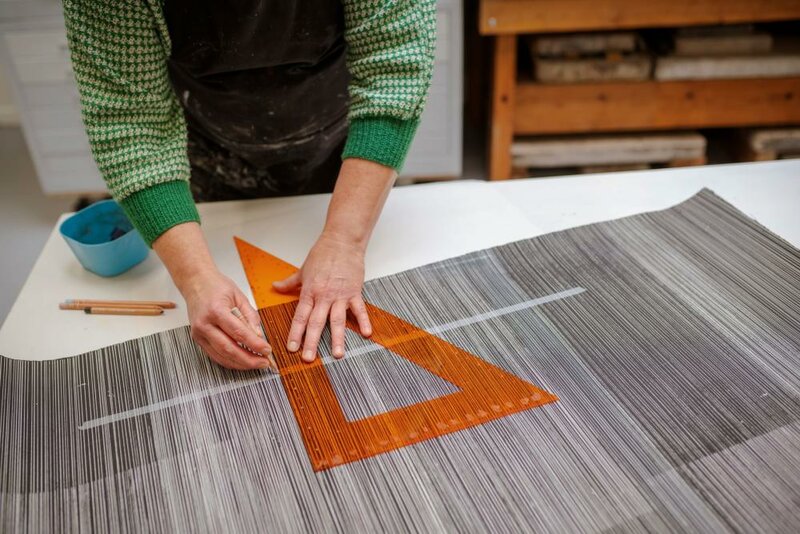
Do your studio's surroundings influence your artwork?
“From an urban setting to a deserted building lot, or even the stones over which you stumbled during a trip to Brittany: my artwork is inspired by the elements of the landscape. In my work I translate my experiences of a place, the feelings it evokes, and how I remember it. I try to grasp the images that stick in my memory after I've left.
I love living in the city, but then again, a life in the countryside also appeals to me. That's the eternal dilemma, I guess. The city allows me to be close to the world and to other artists, and she makes it easier for artists to play an active role in society. There are possibilities to expose your work and it doesn’t take a lot of effort for people to find you and see your work; the city boosts that exchange.
But my studio truly plays an essential part in how I work. ‘How long does it actually take to make an artwork?’ Artists get to hear this question more often than bakers do. I work serially, which means I work on different series as well as on several artworks within one series all at the same time. I’m about to start a series on very thin Japanese paper, but while I was waiting for the materials to arrive, I made this silkscreen in another studio and now I can prepare the stones. This way I can keep going.
I also take my time to turn things over in my mind. Sometimes it takes weeks before I know if a work is finished. That's why I like to work on several artworks at the same time, so they can slowly come into being.
I had no studio during the lockdowns, and that's when I discovered the coloured pencil as a material. I had some unfinished silkscreens, so I decided to continue with pencils because I could do that at the kitchen table. A studio doesn't have to be a spectacular site: plain, small spaces serve just as well.”
In what way are open studio days different from an exhibition?
“The biggest difference is that when you visit an exhibition you expect the artworks to be finished, to be the end of the story. People aren’t really part of your process in that case. What’s great about Atelier in beeld is that people can really sense your process. And it's always nice that they can see you while you’re working. My work is very labour intensive, but also very tactile, through the senses, and the images come into being with the sound of the grating stones."
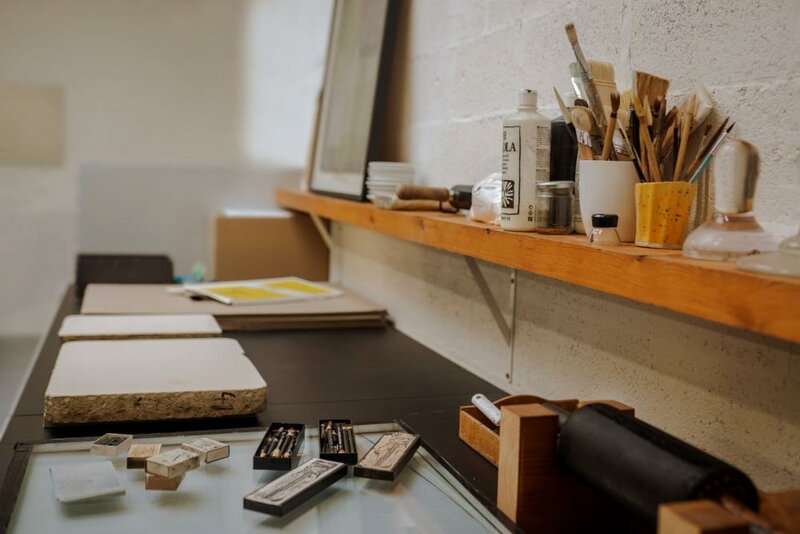
Are there other studios in this neighbourhood?
“On Atelier in beeld's map I found some other studios in this neighbourhood, one of them even in my street. Apparently there are also quite a few litho studios around here. With Co-Op Litho (our studio's name) we’re aiming to be a cooperative where we share our knowledge. We have a Messenger group where we discuss practical things like where do you buy this, how do you do that? But this concept is still in development.
The biggest disadvantage of the open studio days is that the artists cannot visit each other! We should have a separate event for that.”
Are there things you lack as an artist?
“It's not easy to find a good workplace, but also places for showing your work are rather hard to find. Many artists have their studio in a building where they can only stay temporarily, and you don’t make technical investments just like that if you can only stay for a year, maybe two.
Artists in cities are an enrichment for a neighbourhood and for society at large. Sadly though, there are not many of them. As a young artist, I would not have dared to invest in this place. Those are very serious matters.”
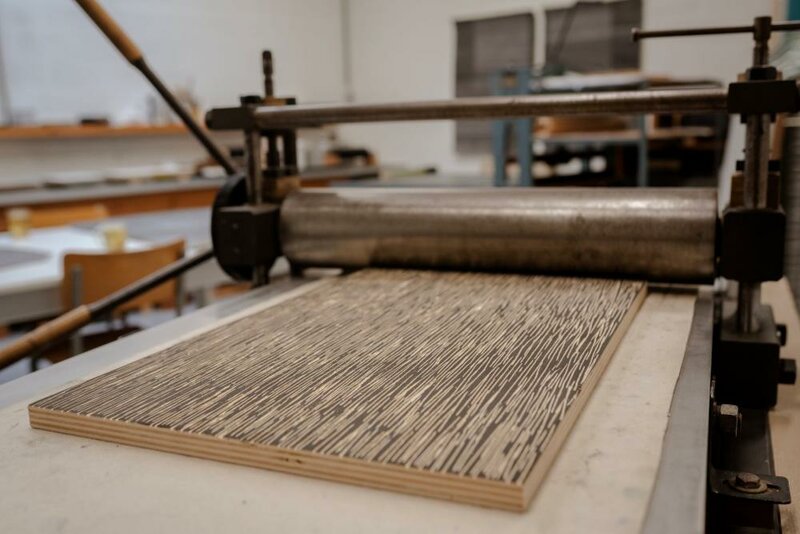
Are you participating in Atelier in beeld? Babette has 3 tips for you!
1: Give your visitors a warm welcome and give them time to look around. If you provide chairs, your visitors will stay longer. And that certainly has a positive effect on the feedback.
2: If you can give a demonstration, do it! But keep it short and sweet. Make sure you feel at ease too.
3: Have some finished works ready to show, so your visitors can see those too.
Are you visiting studios during Atelier in beeld? Here's a visitors tip from Babette:
Prepare your route in advance! That way you can visit several studios and make the most out of your day. I personally realised how much I like to see unfamiliar faces visiting my studio.
